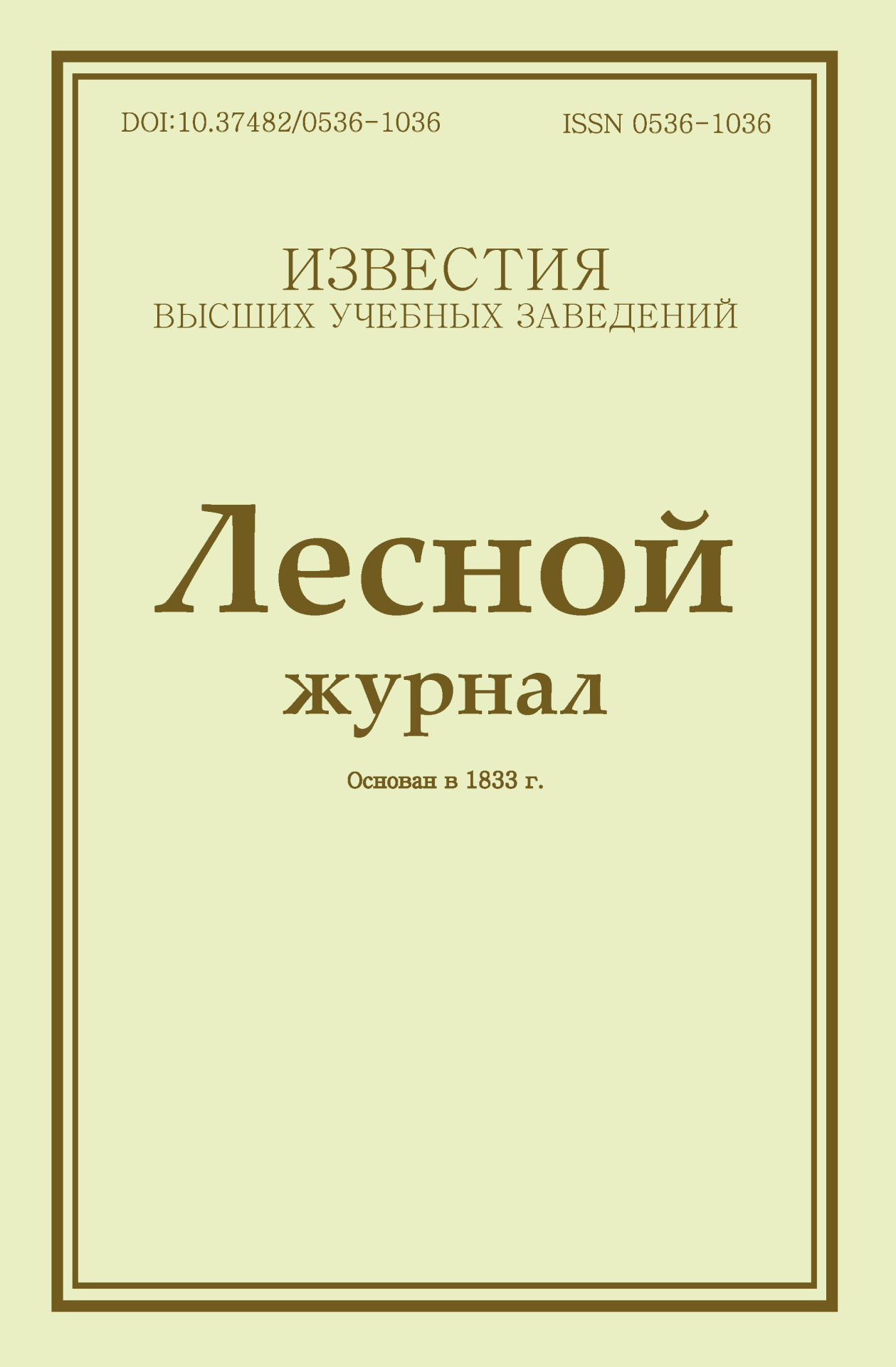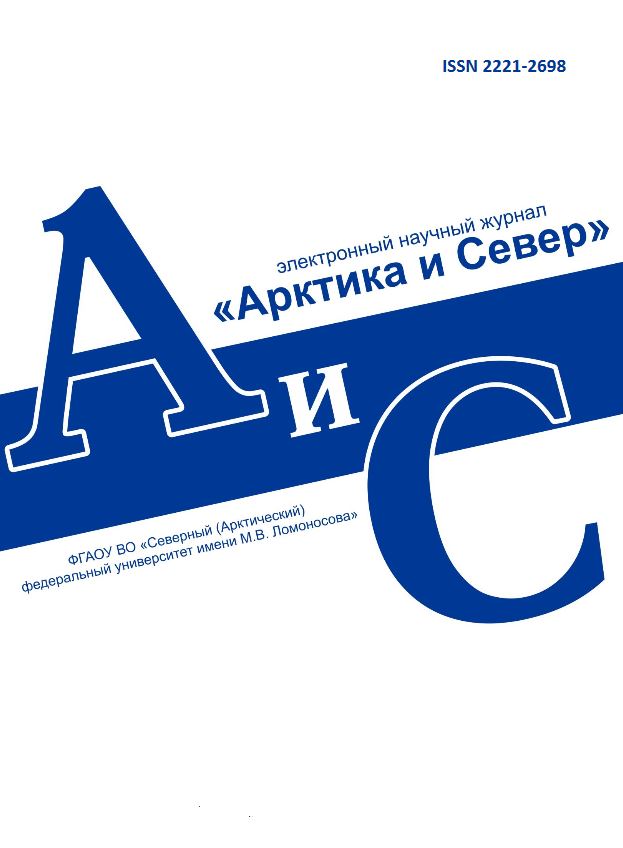
 

Legal and postal addresses of the founder and publisher: Northern (Arctic) Federal University named after M.V. Lomonosov, Naberezhnaya Severnoy Dviny, 17, Arkhangelsk, 163002, Russian Federation
Editorial office address: Journal of Medical and Biological Research, 56 ul. Uritskogo, Arkhangelsk
Phone: (8182) 21-61-00, ext.18-20
E-mail: vestnik_med@narfu.ru
https://vestnikmed.ru/en/
|
Total Spectrum Power and Power of HF Waves in Athletes Depending on the Phase of the Training Year and Other Factors (Review). C. 253-267
|
 |
Section: Review articles
Download
(pdf, 0.6MB )
UDC
[612.181+612.172]:796
DOI
10.37482/2687-1491-Z189
Abstract
As part of the study into the nature of such heart rate variability (HRV) indicators as total spectrum power (TP), absolute power of high frequency waves (HFAP) and their relative power (as a percentage of TP (HF%)), literature data and the results of our own research on the values of these indicators in athletes are systematized. It has been established that TP, HFAP and HF% depend on the type of sports (reaching their maximum in endurance training), experience in sports (the higher the level, the higher these indicators), and phase of the training year (increasing during the preparatory phase, but decreasing slightly in the competitive phase and more significantly during the transition phase). In particular, the paper presents the results of the study of the first author of this article, elite skier D.A. Kataev, who recorded his own cardiointervalogram and the volume and intensity of daily training loads during one training year. This made it possible to evaluate TP, HFAP and HF% dynamics over the three phases and to establish that TP values are directly dependent on the volume and intensity of training loads. However, no such relationship was established for HFAP and HF%. It was shown that in 8 cross-country skiers (members of the Tatarstan national team) TP, HFAP and HF% values during the preparatory phase were higher than in the competition phase. The authors conclude that TP, HFAP and HF% values mainly reflect the influence of the parasympathetic division of the autonomic nervous system (ANS) on athletes’ cardiac activity, as well as on the activation of the sympathetic division of the ANS during the development of precompetition emotional stress in the competitive phase. An idea is postulated about the formation of the anti-apoptotic myocardial system during endurance training, which includes antioxidants, dopamine, serotonin, acetylcholine, prostaglandins, nitric oxide and other compounds.
Keywords
heart rate variability, total spectrum power, HF waves, phases of the training year, anti-apoptotic myocardial system
References
- Gavrilova E.A. Sport, stress, variabel’nost’ [Sport, Stress, Variability]. Moscow, 2015. 167 p.
- Catai A.M., Pastre C.M., de Godoy M.F., da Silva E., de Medeiros Takahashi A.C., Vanderlei L.C.M. Heart Rate Variability: Are You Using It Properly? Standardisation Check List of Procedures. Braz. J. Phys. Ther., 2020, vol. 24, no. 2, pp. 91–102. https://doi.org/10.1016/j.bjpt.2019.02.006
- Perek S., Raz-Pasteur A. Heart Rate Variability: The Age-Old Tool Still Remains Current. Harefuah, 2021, vol. 160, no. 8, pp. 533–536.
- Kataev D.A., Tsirkin V.I., Kishkina V.V., Trukhina S.I., Trukhin A.N. The Nature of Total Power and Very Low Frequency Waves on the Interval Electrocardiogram from the Standpoint of the Human Body’s Adaptation to Motor Activity (Review). J. Med. Biol. Res., 2023, vol. 11, no. 1, рр. 95–107. https://doi.org/10.37482/2687-1491-Z134
- Kataev D.A., Tsirkin V.I., Zavalin N.S., Morozova M.A., Trukhin A.N., Trukhina S.I. Dynamics of TP, HF-, LF-, and VLF-Waves of the Cardiointervalogram (in Clinostasis Conditions) of an Elite Ski Racer in the Preparatory, Competition, and Transition Periods Depending on the Volume and Intensity of Training Loads. Hum. Physiol., 2023, vol. 49, no. 5, pp. 87–100. https://doi.org/10.1134/S0362119723700408
- Mikhaylov V.M. Variabel’nost’ ritma serdtsa (novyy vzglyad na staruyu paradigmu) [Heart Rate Variability (a New Look at the Old Paradigm)]. Ivanovo, 2017. 516 p.
- Shaffer F., Ginsberg J.P. An Overview of Heart Rate Variability Metrics and Norms. Review. Front. Public Health, 2017, vol. 5. Art. no. 258. https://doi.org/10.3389/fpubh.2017.00258
- Belova E.L., Rumyantseva N.V. Adaptatsiya k usloviyam ortostaticheskoy proby u yunykh sportsmenov v zavisimosti ot osobennostey trenirovochnogo protsessa [Adaptation to Conditions of Orthostatic Tests of Young Sportsmen Depending on Features of Training Process]. Uchenye zapiski universiteta im. P.F. Lesgafta, 2008, no. 3, pp. 21–24.
- Kudrya O.N. Vliyanie fizicheskikh nagruzok raznoy napravlennosti na variabel’nost’ ritma serdtsa u sportsmenov [The Influence of the Different Direction Physical Tensions for Heart Rate Variability of the Sportsmen]. Byulleten’ sibirskoy meditsiny, 2009, vol. 8, no. 1, pp. 36–42.
- Ivanova N.V. Otsenka funktsional’nogo sostoyaniya kardiorespiratornoy sistemy sportsmenov s razlichnoy spetsifikoy myshechnoy deyatel’nosti v sorevnovatel’nom periode podgotovki [Evaluation of Cardiorespiratory Functional State in Athletes with Different Regimens of Muscular Activity During Competition Stage of Training]. Vestnik sportivnoy nauki, 2011, no. 1, pp. 64–68.
- Rusanov V.B. Tipologicheskie osobennosti vegetativnoy regulyatsii ritma serdtsa podrostkov v usloviyakh razlichnoy dvigatel’noy aktivnosti [Typological Characteristics of Teenagers’ Heart Rhythm Vegetative Regulation During Different Physical Activity. Vestnik Chelyabinskogo gosudarstvennogo pedagogicheskogo universiteta, 2011, no. 6, pp. 313–324.
- Kudrya O.N. Otsenka funktsional’nogo sostoyaniya i fizicheskoy podgotovlennosti sportsmenov po pokazatelyam variabel’nosti serdechnogo ritma [Evaluation of Functional State and Physical Preparedness of Athletes on Indicators of the Heart Rate Variability]. Vestnik Novosibirskogo gosudarstvennogo pedagogicheskogo universiteta, 2014, no. 1, pp. 185–195.
- Shangareeva G.N. Pokazateli variabel’nosti serdechnogo ritma u yunykh khokkeistov olimpiyskogo rezerva [Heart Rate Variability Indices of Young Hockey Players of Olympic Reserve]. Meditsinskiy vestnik Bashkortostana, 2014, vol. 9, no. 1, pp. 49–52.
- Efremova R.I., Spitsin A.P., Voronina G.A. Reaktivnost’ regulyatornykh sistem yunykh lyzhnikov v zavisimosti ot tipa vegetativnoy regulyatsii [Reactivity of Young Skiers’ Regulatory System in Different Types of Vegetative Regulation]. Vyatskiy meditsinskiy vestnik, 2015, no. 4, pp. 15–18.
- Krylova I.F., Baltabaev F.E., Novichenko A.O., Kulikov V.Yu., Pikovskaya N.B. Analiz parametrov kardiointervalogrammy u sportsmenov, zanimayushchikhsya brazil’skim dzhiu-dzhittsu v protsesse trenirovki [Analysis of Cardiointervalography Parameters at Brazilian Jujutsu Sportsmen During Training]. Meditsina i obrazovanie v Sibiri, 2015, no. 3. Art. no. 86.
- Shlyk N.I. Ekspress-otsenka funktsional’noy gotovnosti organizma sportsmenov k trenirovochnoy i sorevnovatel’noy deyatel’nosti (po dannym analiza variabel’nosti serdechnogo ritma) [Express-Evaluation of the Functional Readiness of the Organism of Athletes for Training and Competitive Activity (According to the Analysis of Heart Rate Variability)]. Nauka i sport: sovremennye tendentsii, 2015, vol. 9, no. 4, pp. 5–15.
- Vikulov A.D., Bocharov M.V., Kaunina D.V., Boykov V.L. Regulyatsiya serdechnoy deyatel’nosti u sportsmenov vysokoy kvalifikatsii [Regulation of Cardiac Activity in Highly Qualified Athletes]. Vestnik sportivnoy nauki, 2017, no. 2, pp. 31–36.
- Vlasenko R.Ya., Balashova A.D., Les’ko A.Yu. The Study of the Heart Rate Among Professional Athletes, Taking into Account Their Personal Characteristics When Performing the PWC170 Standard Exercise Test. Vestnik Novgorodskogo gosudarstvennogo universiteta, 2021, no. 1, pp. 104–107 (in Russ.). https://doi.org/10.34680/2076-8052.2021.1(122).104-107
- Kal’sina V.V., Kudrya O.N., Reutskaya E.A. Otsenka funktsional’nogo sostoyaniya biatlonistok vysokoy kvalifikatsii po pokazatelyam variabel’nosti ritma serdtsa [Assessment of the Functional State of Highly Qualified Biathletes by Indicators of Heart Rate Variability]. Uchenye zapiski universiteta im. P.F. Lesgafta, 2021, no. 8, pp. 111–118. https://doi.org/10.34835/issn.2308-1961.2021.8.p111-118
- Litovchenko O.G., Maksimova A.S., Chirkov A.A. Osobennosti variabel’nosti serdechnogo ritma u molodykh sportsmenov-voleybolistov Khanty-Mansiyskogo avtonomnogo okruga – Yugry [Features of Heart Rate Variability in Young Volleyball Players of Khanty-Mansijsk Autonomous Okrug – Yugra]. Sovremennye voprosy biomeditsiny, 2021, vol. 5, no. 4. Art. no. 18. https://doi.org/10.51871/2588-0500_2021_05_04_18
- Mishchenko I.A., Volynskaya E.V., Korobova S.A. Functional State Monitoring in Taekwondo Athletes by Means of Heart Rate Variability in the Pre-Competition Period. Hum. Sport Med., 2021, vol. 21, no. 2, pp. 42–50 (in Russ.).
- Shlyk N.I. Standards of the Variational Range of Cardiac Intervals at Rest and During an Orthostatic Challenge with Different Types of Regulation in Ski Racers in the Training Process. Sci. Sport Curr. Trends, 2021, vol. 9, no. 4, pp. 35–50 (in Russ.). https://doi.org/10.36028/2308-8826-2021-9-4-35-50
- Korepanov A.L., Bobrik Yu.V., Titarenko A.A., Ponomarev V.A. Dinamika pokazateley variabel’nosti serdechnogo ritma v protsesse treninga vnimaniya u sportsmenov-strelkov vysokoy kvalifikatsii [Dynamics of Heart Rate Variability Indicators in the Process of Attention Training in Athletes-Highly Qualified Shooters]. Teoriya i praktika fizicheskoy kul’tury, 2022, no. 4, pp. 54–56.
- Rul’ E.A., Kudrya O.N. Indicators of Heart Rate Variability of Ski Racers in the Conditions of Training Camps Using Transcranial Electrical Stimulation. Mod. Iss. Biomed., 2022, vol. 6, no. 1 (in Russ.). https://doi.org/10.51871/2588-0500_2022_06_01_25
- Litvin F.B., Anosov I.P., Asyamolov P.O., Vasil’eva G.V., Martynov S.V., Zhigalo V.Ya. Serdechnyy ritm i sistema mikrotsirkulyatsii u lyzhnikov v predsorevnovatel’nom periode sportivnoy podgotovki [Heart Rhythm and Microcirculation System in Skiers During the Precompetition Period of Sports Training]. Vestnik Udmurtskogo universiteta. Ser.: Biologiya. Nauki o zemle, 2012, no. 1, pp. 67–74.
- Litvin F.B., Bruk T.M., Terekhov P.A., Osipova N.V. Anaerobic Capacity in Biathletes Depending on the Type of Autonomic Heart Rate Regulation. J. Med. Biol. Res., 2020, vol. 8, no. 4, pp. 368–377. https://doi.org/10.37482/2687-1491-Z029
- Kaltsatou A., Kouidi E., Fotiou D., Deligiannis P. The Use of Pupillometry in the Assessment of Cardiac Autonomic Function in Elite Different Type Trained Athletes. Eur. J. Appl. Physiol., 2011, vol. 111, no. 9, pp. 2079– 2087. https://doi.org/10.1007/s00421-011-1836-0
- Bryntseva E.V., Gavrilova E.A., Zagorodnyy G.M., Churganov O.A., Belodedova M.D. Prognoz uspeshnosti plovtsov-yuniorov na osnove otsenki variabel’nosti serdechnogo ritma [Prognosis of the Success of Junior Swimmers Based on an Assessment of Heart Rate Variability]. Prikladnaya sportivnaya nauka, 2020, no. 2, pp. 61–69.
- Kataev D.A., Tsirkin V.I., Zavalin N.S., Morozova M.A., Trukhin A.N., Trukhina S.I. Dinamika TPi HFvoln kardiointervalogrammy lyzhnika-gonshchika v podgotovitel’nom, sorevnovatel’nom i perekhodnom periodakh v zavisimosti ot ob”ema i intensivnosti trenirovochnykh nagruzok [Dynamics of TPand HF-Waves of a Ski Racer’s Cardiointervalogram in the Preparatory, Competitive and Transitional Periods, Depending on the Volume and Intensity of Training Loads]. Vestnik sportivnoy nauki, 2023, no. 1, pp. 46–54.
- Missina S.S., Adodin N.V., Kryuchkov A.S., Myakinchenko E.B. The Models of Strength-Oriented Loads Periodization in Mesocycles of Training High-Class Racing Skiers. Russ. J. Phys. Educ. Sport, 2022, vol. 17, no. 3, pp. 23–30 (in Russ.).
- Daniłowicz-Szymanowicz L., Figura-Chmielewska M., Raczak A., Szwoch M., Ratkowski W. The Assessment of Influence of Long-Term Exercise Training on Autonomic Nervous System Activity in Young Athletes Preparing for Competitions. Pol. Merkur. Lekarski, 2011, vol. 30, no. 175, pp. 19–25.
- Cervantes Blásquez J.C., Rodas Font G., Capdevila Ortís L. Heart-Rate Variability and Precompetitive Anxiety in Swimmers. Psicothema, 2009, vol. 21, no. 4, pp. 531–536.
- D’Ascenzi F., Alvino F., Natali B.M., Cameli M., Palmitesta P., Boschetti G., Bonifazi M., Mondillo S. Precompetitive Assessment of Heart Rate Variability in Elite Female Athletes During Play Offs. Clin. Physiol. Funct. Imaging, 2014, vol. 34, no. 3, pp. 230–236. https://doi.org/10.1111/cpf.12088
- Palazzolo J. Anxiety and Performance. Encephale, 2020, vol. 46, no. 2, pp. 158–161. https://doi.org/10.1016/j.encep.2019.07.008
- Koryagina Yu.V., Nopin S.V., Abutalimova S.M., Ter-Akopov G.N. Vegetativnaya regulyatsiya serdechnogo ritma vysokokvalifitsirovannykh lyzhnikov-gonshchikov v usloviyakh trenirovki v srednegor’e [Autonomic Regulation of Heart Rate in Elite Cross-Country Skiers During Training in Middle Altitudes]. Voprosy kurortologii, fizioterapii i lechebnoy fizicheskoy kul’tury, 2021, vol. 98, no. 3-2, p. 98. https://doi.org/10.17116/kurort20219803221
- Hedelin R., Wiklund U., Bjerle P., Henriksson-Larsén K. Preand Post-Season Heart Rate Variability in Adolescent Cross-Country Skiers. Scand. J. Med. Sci. Sports, 2020, vol. 10, no. 5, pp. 298–303. https://doi.org/10.1034/j.1600-0838.2000.010005298.x
- Tsirkin V.I., Trukhin A.N., Trukhina S.I. Kholini monoaminergicheskie transmitternye sistemy v norme i patologii [Cholinergic and Monoaminergic Transmitter Systems in Health and Disease]. Kirov, 2020. 296 p.
|
Make a Submission









Vestnik of NArFU.
Series "Humanitarian and Social Sciences"
.jpg)
Forest Journal

Arctic and North


|




.jpg)

